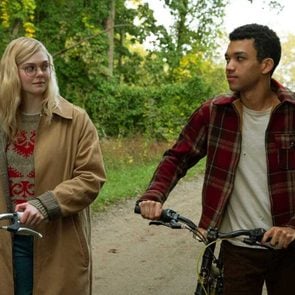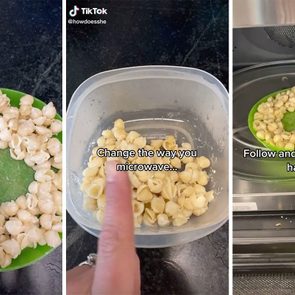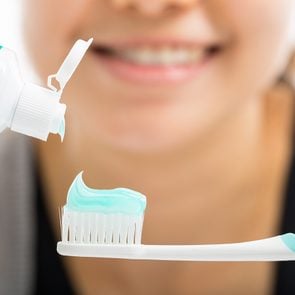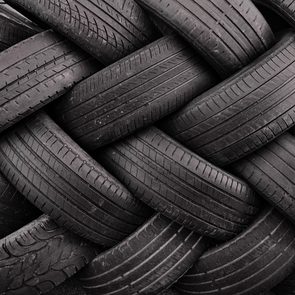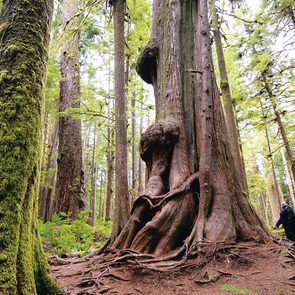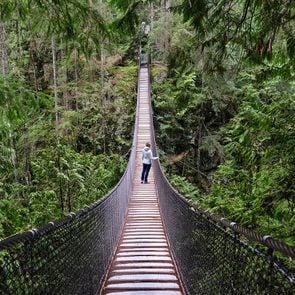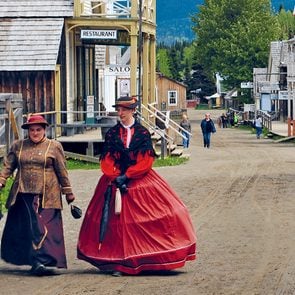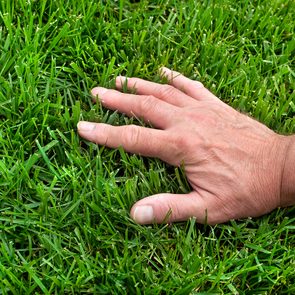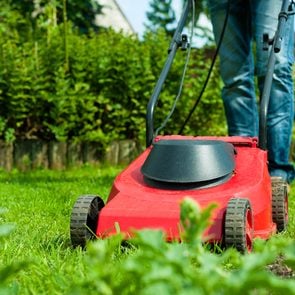
Must-Watch Movies About Moms
Divine Secrets of the Ya-Ya Sisterhood
Based on the novel by Rebecca Wells, Divine Secrets is the story of a mother’s wild childhood adventures as revealed to her grown daughter. Starring Sandra Bullock, Ellen Burstyn and Ashley Judd, it’s one of those movies about moms you can watch and enjoy with your own mom this Mother’s Day.

Erin Brockovich
A single mother gets a job as a legal assistant and almost single-handedly brings down a power company accused of polluting a city’s water supply. The 2000 film snagged Julia Roberts an Oscar for her performance in the title role.

Stepmom
Stepmom is the story of a mother, her children, her ex’s new girlfriend, and how the two women come together for the sake of those kids when Mom falls ill. Starring Julia Roberts and Susan Sarandon, this movie about moms is best watched with a box of tissues nearby.

The Joy Luck Club
In this 1993 film, four Asian mothers and daughters explore their pasts in order to understand their strained mother-daughter relationships.

Steel Magnolias
Looking for movies about moms to watch on Netflix? You can’t go wrong with Steel Magnolias, which follows a group of Louisiana women who bond at Truvy’s beauty parlor as they search for happiness in life. The all-star cast includes Sally Field, Shirley MacLaine, Dolly Parton, Olympia Dukakis, Daryl Hannah and—you guessed it—Julia Roberts.
Check out more of the best movies on Netflix, according to Rotten Tomatoes.

Baby Boom
This 1987 film is both funny and sentimental. The story of a career woman with no time for children who becomes a reluctant mother, Baby Boom showcases Diane Keaton at her very best.

Terms of Endearment
In this Best Picture winner, the mother-daughter relationship is sometimes loving, sometimes difficult. Sound familiar? Terms of Endearment may be 40 years old, but it remains as relevant—and relatable—as ever.
Here’s every Oscar Best Picture winner, ranked.

Mr. Mom
Before he became Batman, Michael Keaton was Mr. Mom. In this 1983 comedy-drama, Keaton and Terri Garr play a husband and wife who trade roles when he loses his job. The new stay-at-home dad gains a new appreciation for motherhood while raising their children.

Mommie Dearest
Critically panned on its release in 1981, Mommie Dearest has gone on to become a cult classic—and a shocking depiction of family dysfunction. Starring Faye Dunaway as Hollywood legend Joan Crawford, the infamous movie chronicles the abuse endured by her daughter, Christina, and her son, Christopher.

Freaky Friday
A mother and her teenage daughter “switch” bodies, and have to live each other’s lives one strange day. Freaky Friday gives new meaning to “walking a mile” in another’s shoes! The 1976 original stars Barbara Harris and Jodie Foster, but you can also opt for the 2003 remake with Jamie Lee Curtis and Lindsay Lohan.
Next, check out 12 movies that are better than the books they’re based on.

Growing older is a gift, but sometimes the media, our health-care system and even our own personal age biases don’t make it seem that way. Traditional assisted-living communities—with their institutional feel—can reinforce stereotypes. That’s what makes Tapestry so different. With four senior living communities in Canada (three in BC and one in Ontario), Tapestry helps residents live healthy, engaged and purposeful lives in a wellness-inspired environment. (And Tapestry has been recognized with Pinnacle and Beacon Awards which recognize the top 25 seniors’ communities for wellness in North America.)
Here are five myths around aging that Tapestry shatters with its focus on wellness and helping residents remain independent longer so they can continue to fulfill their goals and life’s purpose.
1. Myth: Age is an accurate way to assess our physical and cognitive abilities.

Defining people purely by the number of candles on their birthday cake is ageism—and it’s wrong! According to a 2021 report by the World Health Organization (WHO), ageism is a widespread human rights problem that affects billions of people globally. Not only can it limit our own ideas of what we think we can achieve at any age, but it also impacts the way people treat us, the goals we’re encouraged to set and the health-care options we’re offered.
Tapestry knows age is just a number and it shouldn’t act as a barrier to a fulfilling life. At Tapestry communities, residents of all ages are physically active, pursue creative and philanthropic pursuits, teach classes, mentor, volunteer and much more. Wellness has seven dimensions (physical, emotional, intellectual, social, spiritual, environmental and occupational) and Tapestry knows it’s important to foster them at every age to sustain your well-being and maintain your independence.
2. Myth: Adventure is for the young.

Who says the fun has to stop after 70 or 80 years of age? Tapestry believes it’s never too late to enjoy a new experience and there’s no need to limit your choices (or let someone else limit them for you) based on your age. Ever wanted to skydive? Snowshoe? Kayak? Walk the CN Tower Edge Walk at 553 metres above Toronto’s downtown core or zip line at the Niagara gorge? These are all activities that Tapestry residents have enjoyed together. Tapestry believes age should not be a barrier to seeking new adventures, whatever they may be!
3. Myth: Our contributions to our communities will decline as we age.

Every person at every age can have a meaningful impact on society and the world. One aspect of wellness is “occupational” and it’s an important part of our own well-being (not to mention the health of our communities). Last year at Tapestry’s Victoria Harbour community, residents created the “Patchwork of the Heart” quilt and sold tickets to a raffle that offered buyers the chance to win the spectacular quilt. The residents’ efforts raised more than $20,000 for the Inter-Cultural Association of Greater Victoria (ICA), which is working to create long-term housing solutions for Ukrainians fleeing war. We all have value no matter our age and we have power to create meaningful change.
4. Myth: Loneliness is a normal part of getting older.

No one should have to spend their later years on their own. Living in a vibrant community where individuals engage with each other every day is a simple way to combat isolation and feelings of aloneness. Plus, being more sociable is life-enriching and is linked to better cognitive performance and a lower risk of dementia. The reason? It could be because the act of socializing requires people to use their memory and language skills, keeping the brain active and stimulated. Continuing to learn and keeping active are also important ways to hinder cognitive decline. With its focus on the 7 Dimensions of Wellness, Tapestry offers plenty of options for socialization, exercise and learning.
5. Myth: Living at home is the only way to be independent.

The isolation that comes from living at home alone may not be the most optimal for your brain or body. If you choose to live in a seniors’ community like Tapestry, you can maintain your independence while focusing on doing all the things you love instead of housekeeping and home maintenance. At the same time, you can easily access health services (medication administration, blood-pressure monitoring, shower and grooming support) you may need to retain your independence for as long as possible. Tapestry’s health services are provided discreetly in the comfort and privacy of your home. Residents who live at Tapestry love living independently in their beautifully-appointed home as part of a vibrant community where they can be safe, healthy, active and engaged.
Want to learn more about Tapestry’s communities for seniors? Visit DiscoverTapestry.com.
I am a farm girl from the Prairies. Stony Plain, Alberta, to be exact. Maybe that is where I caught the wildlife photography bug. There is so much peace, joy and fun to be had spending time out in nature, no matter the season.

Take for example, heading out to check on some little great horned owlets you’d spotted, only to hear something creeping through the bush. You’re afraid this is the day you might die, only to discover that it is merely a ruffed grouse that has fallen in love with your giraffe-print boots!

Opportunities for wildlife photography abound
The amazing sights are endless. Driving along the road, you suddenly notice a flash of orange—you’ve come upon a fox den and one little guy even wants to pose for you! Then there is the rarely seen long-eared owl that looks just as surprised to see you as you are to see it. Migration is a wonderful time to partake in more discoveries, such as spotting a massive flock of snow geese.

When your friends know about your passion, you tend to get phone calls that go something like, “The deer are in the peas. Bring your camera!” Or as another friend proclaimed, “I’ve got an owl in my chicken coop, come over!” That time I captured a pic of a cute little northern saw-whet owl.

A Rare Find
One very cold winter day, I was driving with my window open a crack and could hear some chickadees raising a fuss. I stopped, got out and searched for a long time before I finally discovered the cause of the ruckus, a northern pygmy owl. They aren’t much bigger than the chickadees themselves! He was an exciting and rare find for my area.
How many of these Canadian birds have you spotted in your travels?

I’ve snapped photos of apple-eating coyotes, great grey owls on the hunt, deer and elk fighting and breeding in the rutting season, and all kinds of birds mating and nesting. Porcupines are always a treat, too. I’ve even watched a common raven dance like no one was watching—bouncing up and down on a fence post just for the fun of it.
I’ve also rescued a common loon and a great horned owl. Those will get your adrenaline pumping when you are face-to-beak with them!
Discover the best wildlife experience in every province.

I keep my camera handy when I travel, too. On a recent vacation, my husband and I spotted a black bear filling up on berries, as well as an intelligent mule deer sliding her neck along a branch to push it down so she could reach the leaves she wanted to eat.

The Best Gift of All
One of my favourite traditions is every year on Mother’s Day, when my son Ryan and I go for drives looking for wildlife. That is his gift to me—the best gift ever in my opinion. One year, we stopped to watch snow geese fly just over our vehicle. It was quite the sight—and so were all the goose droppings on the windshield when we got back in the car! We just looked at each other and laughed, wondering how we didn’t end up covered in it as well.
Trying to capture great wildlife photography involves a lot of driving to various locales—and you don’t always spot wildlife—but you do get to experience sunrises and sunsets, trees, lakes, mountains, the changing of the seasons and the all-encompassing beauty that our country has to offer. So why not get in your car, go for a drive and enjoy nature in our Canada!
Next, check out this gallery of beautiful bird photography from across Canada.
Turns out, there are plenty of surprising reasons to grate your own cheese instead of buying the pre-shredded cheese from the supermarket: it melts more smoothly, you get more bang for your buck and it tastes better, since freshly-grated cheese doesn’t contain added preservatives and chemicals. And since you’re shredding it on the spot, it will have a fresher, creamier taste. Yum!
But grating cheese can be a hassle, which is why the pre-shredded stuff often ends up in your grocery cart in spite of the reasons listed above. One of the most annoying aspects of grating is that the cheese tends to sticks to the grater, making it difficult to tell if you’ve shredded enough to make your favourite macaroni and cheese recipe. It also makes washing the grater a total pain.
Luckily, we have an easy cheese grating hack that makes clean-up a total breeze.
This trick will make cheese grating so easy
TikTok user @HowDoesShe shared a super easy trick that will save you the frustration of picking out cheese from the back of the grater.
Here’s how it works: give the surface of your grater a quick spray with a little olive oil (inside and out) and watch the shredded cheese fall right off the grater. Check out how it works in this TikTok video:
@howdoessheTakes one second, but so satisfying! #tipsandtricks #earthday♬ SUNNY DAY – Matteo Rossanese
You can even freeze shredded cheese once you’re done with prep. How grate is that?
Discover more smart cooking hacks to save time (and effort) in the kitchen.
When it comes to cleaning there are a few rules you follow. Dust twice a week, change your bedsheets biweekly, and throw out old makeup. But what about your toothbrush?
You may prolong replacing your frayed toothbrush to get a few more uses, but it’s best to do it sooner rather than later. The truth is, toothbrushes don’t last forever and not updating them could spell trouble, namely tooth decay and periodontal (gum) disease, both of which are preventable with good at-home care and regular check-ups, says Sally Cram, DDS, a spokesperson for the American Dental Association (ADA) and a practicing periodontist in Washington, DC. “We want to have the right tools, make sure they’re in the right condition and know how to use them,” she adds.
Here’s what you need to know about replacing your toothbrush and what can happen if you don’t.
How often you should replace your toothbrush
The ADA recommends replacing your brush (manual or electric) every three to four months, more often if the bristles are obviously in bad shape. You can tell if the brush is past its shelf life by looking physically at the bristles, says Dr. Cram. “You’ll notice that the tips of the bristles are starting to fray,” she says. The strands of the bristles may even start to unweave.
Some electric models have a blue colour in between the bristles—when the blue vanishes, you’re supposed to replace the brush. Ignore this, says Dr. Cram. “The acid in your saliva makes the blue disappear,” she explains. “If you don’t have a lot of acid in your saliva you may have blue bristles that still look like they’ve been scouring the tub.”
With a powered toothbrush, you only need to replace the head at regular intervals, not the entire device.
Find out the signs of disease your teeth can reveal.
Exceptions to the rule
When it comes to how often you should replace your toothbrush, there are exceptions for people with a lot of crowns and fillings. “Those toothbrushes are going to get beat up and worn out a lot faster than someone who doesn’t,” says Dr. Cram. Both fillings and crowns can create a lot of uneven surfaces and rough edges in your mouth which overwork brushes.
Another exception is if you’ve been sick with something potentially contagious. If you don’t invest in a new brush after this type of illness, says Janna Burnett, DDS, clinical assistant professor of comprehensive dentistry at Texas A&M College of Dentistry in Dallas, “You could reinfect yourself.” You might also seriously consider retiring your toothbrush if you drop it on the toilet-brush cleaner or in any other unsavoury location, adds Dr. Burnett.
Possibility of gum disease
“When those bristles are splayed and bent, they’re not being effective at getting down that little collar of gum tissue,” explains Dr. Cram. We need to brush and floss away plaque and bacteria from your mouth at least every 24 hours. “Just 48 hours is enough to cause inflammation which can lead to periodontal [gum] disease,” she cautions.
Signs of early gum disease (gingivitis) include but are not limited to red, swollen gums or tender and bleeding gums, and bad breath, according to the National Institute of Dental and Craniofacial Research. If you don’t take care of gum disease in its earliest stages, it can damage as far down to your bones, which means you can start losing your teeth.
The bacteria that cause periodontitis can affect other parts of your body as well if they get into your bloodstream. According to the American Academy of Periodontology, gum disease may be implicated in heart disease, respiratory disease, rheumatoid arthritis, and make it difficult to control blood sugar.
Possibility of tooth decay
Bacteria and leftover food can combine together to form plaque on teeth, which is a sticky, bacteria-containing biofilm. This plaque then feeds off sugar and starch from the food you eat to produce acids which, in turn, can erode the outer enamel layer of your teeth and lead to cavities and even tooth loss.
Fluoride in toothpaste along with water work with calcium and phosphate in your saliva to repair the enamel, explains the National Institute of Dental and Craniofacial Research. But this natural mechanism will soon be overwhelmed if you stick to a sugary, starchy diet, don’t brush your teeth, and don’t replace your toothbrush regularly.
These 14 foods are worse for your teeth than candy.

Buying a toothbrush
Most experts, including the ADA, recommend buying soft toothbrushes. “Hard toothbrushes have hard, stiff bristles that don’t flex and don’t bend and don’t sweep down under your gum,” says Dr. Cram. “Soft bristles do a much better job of getting into more nooks and crannies.” And that’s the only way you’re going to flush your mouth of lurking bacteria, which can cause so many problems.
Also, look for brushes that have lots of bristles as opposed to sparse ones. “It’s better to have lots of bristles, then as you’re making a circular motion with the brush, you’re actually getting the little bristles to sweet under the gum tissue,” advises Dr. Cram.
The size of the head matters as well. “I get people who have really tiny mouths but are using a full-size brush,” says Dr. Cram. “They may need a toothbrush that has a more compact head. I have some adults who use children’s toothbrushes.”
The best brushing technique
The ADA recommends keeping the brush at a 45-degree angle to your gums then moving it back and forth in short strokes. Make sure to cover the outer surfaces of your teeth, the inner surfaces as well as the top (chewing) surfaces. Getting the inner surfaces of your front teeth can be tricky. The ADA also suggests doing up-and-down strokes with your brush slanted vertically.
“Ultimately you want to make sure you are focusing on the gum line,” says Dr. Burnett. “Many people just brush the eating surface.”
Your toothpaste should always contain fluoride, which protects against cavities. Practice brushing for two minutes twice a day, flossing between your teeth once a day, and get regular check-ups with a dentist.
Here are 13 signs you need to see a dentist right away.
How to take care of your brush
Take good care of your toothbrush during its life span, however brief. You should rinse with tap water after each use, according to the ADA. There’s generally no reason to disinfect it and that hasn’t proven effective anyway, according to the Centers for Disease Control and Prevention. In between uses, stand the brush upright—away from other toothbrushes—in the open air. Covering them up or putting them in a container can actually encourage bacteria growth.
The ADA also says not to share your toothbrush as you could end up with someone else’s germs.
Next, check out 13 secrets Canadian dentists want you to know.

If you want to live a healthy lifestyle, staying hydrated is one of the most important steps you can take. Not only is hydration important for lubricating joints, protecting tissues and getting rid of wastes, but failure to drink enough fluids can cause overheating, constipation, mood changes and unclear thinking.
That said, all drinks aren’t created equal. For Tom Brady and Beyoncé, alkaline water is the must-have beverage for improving hydration and overall health. It’s also the choice of BodyBreak co-founders and Canadian wellness icons Hal Johnson and Joanne McLeod.
But what exactly is alkaline water?
This quick primer delves into the pH scale, the alkaline diet and how alkaline water could become part of your health regimen.

How the pH scale works
“The pH scale measures how acidic or alkaline a substance is,” explains BodyBreak’s Joanne McLeod. “The scale ranges from 0 to 14.”
- 0 is highly acidic
- 7 is neutral
- 14 is highly alkaline
What does “alkaline” mean when it comes to food?
Pure, distilled water has a pH of 7, making it completely neutral. Otherwise, foods and beverages tend to be acidic or alkaline. Foods with a low pH (below 7) are considered acidic, while foods with a high pH (above 7) are alkaline.
“Maintaining a balanced alkaline diet has become a popular approach for wellness,” notes BodyBreak’s Hal Johnson. This type of diet involves increasing your intake of alkaline foods and decreasing your acidic food consumption.

Examples of alkaline foods and drinks
- Most fresh vegetables
- Soy including miso, tofu and tempeh
- Fats like olive oil, avocados, nuts and seeds
- Herbal teas
- AC+ION water (the highest pH water in Canada)
Examples of acidic foods and drinks
- Some types of cheese
- Fish and seafood
- Eggs
- Salty processed foods
- Deli meat
- Commercial grains like breakfast cereal and bread
- Refined sugar including soft drinks, sugary sports drinks, candy and pastries
- Coffee
- Alcohol

When to drink alkaline water
“Proper hydration is essential and has a huge impact on your overall health,” Johnson says. “It’s even more important if you’re active, have poor eating habits or you’re stressed.” Beyoncé has been known to drink exclusively alkaline water while on tour, while Tom Brady believes that an alkaline diet (and anywhere from 12 to 25 glasses of water in a day) reduces inflammation and keeps him young.

AC+ION alkaline water promotes optimal hydration and has the highest pH of any water in Canada. “It’s filtered multiple times to remove impurities and is UV processed, reverse osmosis demineralizes it and then it’s ionized to create a pH of 9.5,” notes McLeod. According to Johnson, “AC+ION is a great alternative to low pH, sugary sports drinks, helps balance out low pH foods and is a great way to keep hydrated.”
Wherever you go, tote your alkaline water with you—especially if you’ll be exercising. If you find that you don’t drink enough throughout the day, set an alarm every 30 or 60 minutes to get into the habit.

AC+ION water is available at select convenience stores across Canada for a suggested price of $2.99/liter bottle. You can also find it at amazon.ca. For more information, visit drinkactionwater.ca.
If you’ve ever looked closely at the tires on your car or touched the tires while wandering around an auto shop, you’ve probably seen those little hairs sticking out of the black rubber and wondered, Why do tires have hairs? Are they there for some safety reason I don’t know about? Those little bits are one of the weird car features most people don’t usually stop to think about. But then some people do.
When it comes to the tire-hair mystery, we asked car experts to solve it for us once and for all. This will free up some mental bandwidth to think about practical tire issues, like why there are numbers and red and yellow dots on tires as well. Here’s what the auto pros told us.
Get Reader’s Digest’s Daily Digest newsletter for more fascinating facts, humour, travel and tech all week long.
What are those little hairs on tires?
Located on the vertical part of the tire, which is also known as the sidewall, these curious little rubber hairs are known as vent spews or—more adorably—tire whiskers. According to Will Robbins, director of consumer product strategy for Bridgestone Americas, these vent spews are a result of the tire manufacturing process and happen as the tread pattern mould is pressed into a new tire. “Each mould is specific to the tire size and type that is being made,” says Robbins. “As the pattern is pressed into the tire’s rubber, the extra or unnecessary rubber requires a way to escape the mold.” Because pinhole-size escape vents are created throughout each mould, little tire hairs are born.
Curiously, there’s no set number of hairs each tire will have. The exact number of vent spews varies based on the design and size of the tires. But the presence of tire hair is universal. They are nothing more than remnants of the intricate process that makes strong and durable tires that safely carry you around town every day.
Why do tires have hairs?
These vent spews are crucial in the tire-making process. During the manufacturing of a tire, a process known as vulcanization occurs. This is when the raw rubber is heated and moulded into the shape of a tire.
Some excess rubber will seep out through small vents or channels in the mold. As the tire cools and the rubber solidifies, these tiny strands, or hairs, remain attached to the surface of the tire. When it comes to what are the hairs on tires for, Margarette Stine, automotive expert at 4WheelOnline, says this: “They help to ensure that there are no trapped gases or air bubbles in the tire that could compromise its structural integrity and performance.”
How do tire hairs affect driving and safety?
They don’t have any effect on safe driving. Because they’re found on the part of the tire rubber that doesn’t hit the road, Stine says they have no impact on how well your tire grips the pavement in rainy weather or the overall comfort of the ride. These rubber hairs also don’t have any impact on road noise; they are merely a testament to the new tire’s arrival in the world.
Should you remove tire hairs?
You can if you want to, but there is no functional reason to do it. If you’re inclined to want to safely trim or remove them for aesthetic reasons, you can do so with extremely sharp scissors or use a fine abrasive tool to shave them off, suggests Stine.
Take caution and use great care to avoid cutting into the actual tire rubber. That can damage the structural integrity of the tire or compromise the tire’s performance, which means, at best, you’ll need to shell out more money to replace a tire. It could also mean you’ll have an accident. But, says Stine, “as long as the process of removing the tire hair is executed with precision, your tire will not be exposed to unnecessary risks.” (Here’s more car tire maintenance advice you’ll wish you’d known sooner.)
What should you do if your tire doesn’t have these rubber hairs?
If you don’t see any of those rubber hairs on your tires, you probably don’t need to sweat it. They are naturally worn away during normal driving, says Robbins, and the presence or absence of these hairs doesn’t really determine if a tire is safe. It’s far more important to regularly examine your tires for signs of wear and tear, such as reduced tread depth, cracks or bulges.
There is one instance, however, where the lack of tire hairs can be a tell: It could be a sign that they are worn, old and need to be replaced. Part of being a responsible car owner means monitoring the health of your tires closely and regularly. Refer to your car manufacturer’s guidelines for when and how often your tires should be replaced.
Next, find out what can happen if you don’t remove your winter tires in the spring.

Victoria Attractions That Keep Me Coming Back
I first fell in love with the charm of Victoria, B.C., when I visited soon after moving west to Calgary from Atlantic Canada in 2007. The Victoria Harbour is reminiscent of the Halifax Harbour (providing a taste of home for me) and the city offers beautiful scenery, kind people and endless adventures!
Over the years, Victoria has become the vacation spot of choice for my fiancé Paul and me. Our favourite time of year to visit is in May just before the height of the tourist season, and where the weather is generally more temperate than Calgary.
We typically arrive on Thursday and stay until Sunday, spending our nights at a lovely local hotel, and our days exploring the city and beyond.

The hotel is situated on the water, and is within walking distance to downtown Victoria, which features an eclectic variety of shops and restaurants. We like to head to Victoria’s historic Chinatown, in particular, Fan Tan Alley, to check out a wonderful ice cream shop and a chocolatier.
Discover more historical landmarks every Canadian needs to visit.

Water taxis are available in regular rotation from a dock next to the hotel and they are an inexpensive and enjoyable way to reach the Fisherman’s Wharf in the Inner Harbour. Keep an eye out for harbour seals that surface from time to time along the wharf.

Whale watching is an experience not to be missed while visiting the island. There are several operators to choose from along the wharf, and they offer a variety of vessels ranging from Zodiacs—brace for a cold, bumpy ride on the waves—to catamarans. You might encounter orcas, humpbacks, seals and sea lions while at sea.
Check out the best wildlife experience in every province.
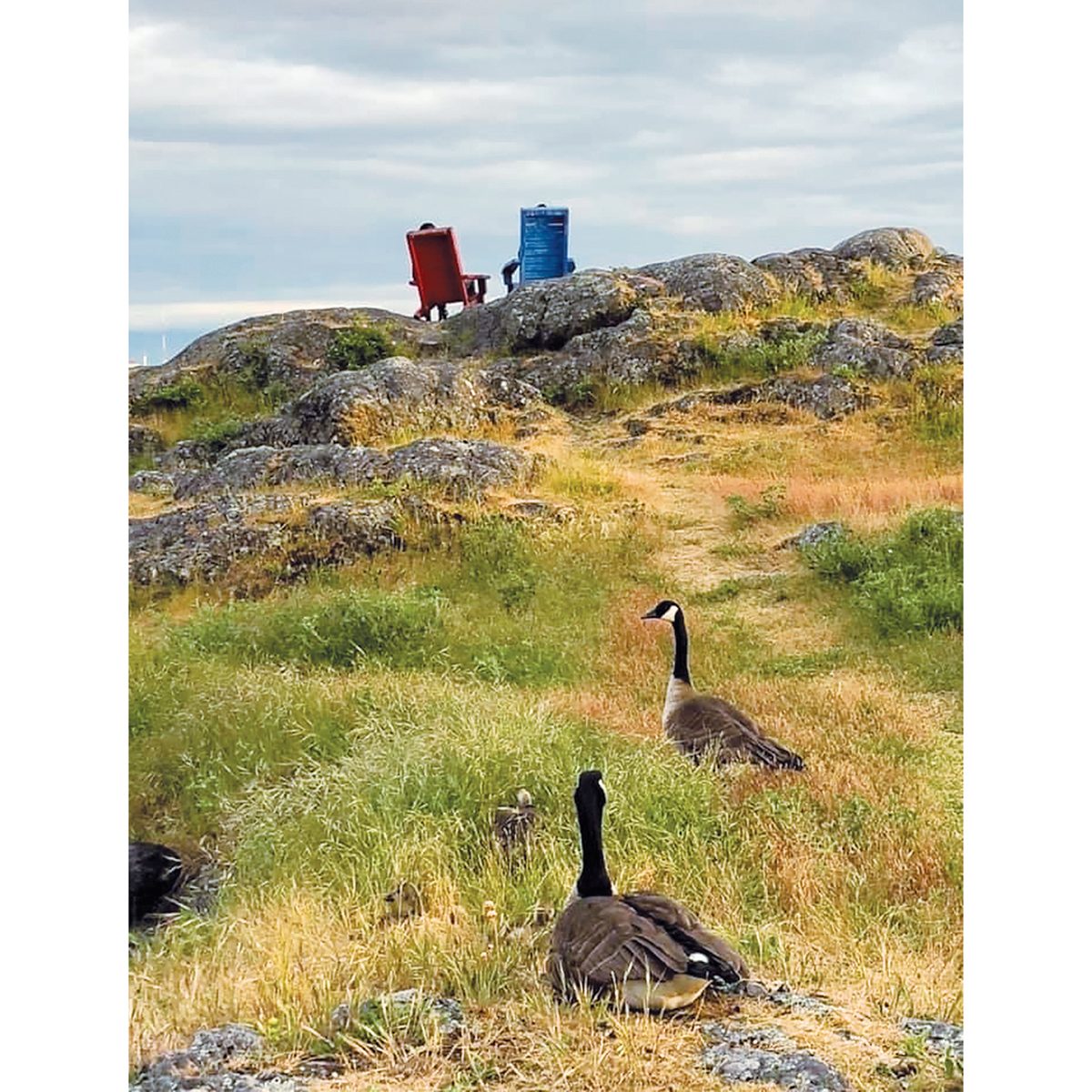
Plan to take a drive along the coast of Victoria to an area called Oak Bay with beautiful seascapes, as well as to Ogden Point for breathtaking sunsets. There is a stunning viewpoint of the city from Gonzales Hill Regional Park, and you might be lucky enough to see a few deer while you’re there.
Some of the most memorable experiences that we’ve had during our visits to Victoria have been connected to the people that we have encountered during our travels.
When we landed at the airport during our last trip, while picking up a red Mustang convertible for fun, Paul overheard a man at the car rental counter saying he was in a bind as he couldn’t remember his PIN number for his credit card. Paul offered to drive the man to his bank to get it looked after, we waited for him, and then took him back to the airport. He was a great guy, very appreciative, and it was easy for us to do it. Paul’s kindness and social personality are two huge reasons why I love him so much.
We also met two lovely elderly ladies in Tim Hortons with whom we visited for ages. As it turned out, one lady was originally from an area of the Maritimes near where I lived for years—how I love “small world” stories.

On our last full day in Victoria, we drove for half an hour to Witty’s Lagoon Regional Park, a very picturesque area that we had heard about from a friend during our trip. While there, we met an older gentleman who had recently moved to the island, and Paul took his hand and helped him up on to the rocks to walk along the beach with us. We spent a couple of hours with this man, listening to his stories and enjoying his company while we all explored nature.
Explore more of Canada’s greatest hikes.

I highly recommend engaging with locals and other tourists while on vacation as it truly feeds the soul. Do talk to strangers, as it is sure to enhance your Victoria experience!
If you enjoyed this roundup of Victoria attractions, don’t miss our countdown of 25 unforgettable things to do on Vancouver Island.
Where the glory days of mid-century science fiction were fuelled by fears of nuclear war and robot overlords, cli-fi focuses on the havoc wrought by the very real threat of climate change. And the pulse-racing Birnam Wood, from Canada-born, New Zealand-based author Eleanor Catton, is creepy cli-fi at its best.
The book takes place in 2017, as climate terror and predatory capitalism converge in a web of conspiracy and murder (the title fittingly comes from an ominous prophecy in Macbeth). At first blush, though, its premise doesn’t sound much like a thriller.
Friends Mira and Shelley are the founders of Birnam Wood, a guerilla gardening collective in New Zealand that surreptitiously plants crops next to highways and on abandoned land. By chance, Mira meets Robert Lemoine, an American tech billionaire who tells them he put down a deposit on a farm in their country, where he plans to build a luxury bunker for the apocalypse, and offers them funding.
Of course, as these things tend to go, the generous act is too good to be true. To the Birnam Wood gardeners, Lemoine represents the possibility of transforming their small-scale operation into something that can change the way society looks at land use. To Lemoine, Birnam Wood is nothing but an experiment in human behaviour. He’s the cat, and the women are the toys on strings.
A major inspiration for the novel is the real-life controversy that arose a few years back when Peter Thiel, the American billionaire and co-founder of PayPal, bought a large tract of land on Lake Wanaka, an isolated region in southern New Zealand. Shielded from the elements and, presumably, the apocalypse, the country has become popular with doomsday-prepping plutocrats seeking an escape at the end of the world.
Thiel, for example, gained New Zealand citizenship—arguably to avoid going through the real estate red tape—and planned to build a mansion into the hillside with a meditation pod and a spa. (The proposal was officially quashed in 2022, after a lengthy process and public outcry.)
In her work, Catton is visibly wary of wealthy foreigners coming to New Zealand and tapping its resources: her last novel, 2013’s The Luminaries, was an 850-page Dickensian murder mystery set during the country’s 19th-century gold rush. At 28, Catton became the youngest-ever winner of the prestigious Booker Prize and later adapted The Luminaries into an award-winning miniseries for the BBC.
A decade after The Luminaries, she’s packing an erudite novel of ideas into a rollicking eco-escapade. The characters populating the book are amateur philosophers who spout blistering tirades and banter with the speed and confidence of Aaron Sorkin creations. They quarrel about whether capitalism can be used for good, the respective virtues of libertarianism and collectivism, and that ever-pressing question of what it means to sell out.
The genius of Catton’s latest novel is in its pacing. The first half builds deliberately, almost excruciatingly slowly, as she sets up her characters and plots like chess pieces. Then, suddenly, everything happens at once, and it becomes impossible to stop turning the pages. Disparate stories collide in deliciously surprising ways; endless talk gives way to galloping action; and the tension between Mira, Shelley and Lemoine festers its way to a conclusion you could never have expected.
Next, check out this new novel by Cherie Dimaline—and learn why it should be next on your reading list.
There are still some drivers who check their oil levels every time they gas up, but most mowers of lawns tend to ignore the oil needs of their gas-powered lawn mowers. As a general rule, the essential lubricants in your lawn mower should be refreshed after every 30 to 50 hours of operation and—at a minimum—once every mowing season.
Most gas-powered lawn mowers sold and in use today have 4-stroke engines that accept engine oil in much the same way as cars. You check the dipstick and if it reads low you add more, but not too much. Most mowers have an oil capacity of around 475 mL. Drain the oil as needed (refer to your owner’s manual). Then add the new oil. You’ll have to dispose of the old oil at a disposal site.
Lawn Mower Oil Type
So what kind of oil should you use in your lawn mower? If you have an older two-stroke mower you probably know the drill already. The oil is added to the gas every time you fuel up, usually at an oil-to-gas ratio of 32 to 50 to 1. Because two-stroke engines are very loud and heavy polluters, you won’t find many of them around anymore. For a four-stroke mower engine, where the oil is poured into the crankcase as with a car, you can purchase special small-engine oil in a variety of weights, depending largely on the operating temperature in which you are mowing. Small engine oil is recommended by lawn mower manufactures because it has detergents that benefit your machine. But, you can certainly use regular automotive motor oil if it is more convenient. Do check your mower owner’s manual for recommendations.
Here are some basic guidelines for choosing oil products for your lawn mower, whether riding or walk-behind. Look for oil classified as For Service: “SF,” “SG,” “SH,” or “SJ.” Synthetic oils may be used.
SAE 30: A safe bet, especially in warmer climates
SAE 10W-30: Also a good general product; good for cold-weather starting
5W-30: Preferred for cold weather starting
Next, find out a genius hack to patch lawn gaps.

